Top 10 TECHNOLOGY trends
1. Internet of Things is enabling previously unimaginable solutions by bringing together previously unconnected objects onto the cloud
The Internet of Things (IoT) refers to the interconnection of uniquely identifiable devices within the existing Internet infrastructure. In addition to laptops and mobile devices, the IoT is now getting everything else onto the cloud, and is making Big Data capabilities more powerful by significantly increasing the amount and types of data that is accessible digitally.
IDC puts IoT technology and services spending at $8.9 trillion in 2020, up from $4.8 trillion in 2012. Number of installed units are projected at 26 billion by 2020 (up from 900 million in 2009), generating $300 billion in incremental services revenue according to Gartner.
BI Intelligence, a research service from Business Insider, finds that 1.9 billion once-inert everyday and enterprise devices are already being connected to the Internet — from parking meters to home thermostats — and by 2018 that number will top 9 billion.

The Industrial IoT (General Electric famously called it the Industrial Internet) combines Big-Data analysis and industrial engineering to bring huge improvement to the efficiency of machineries and factories. For example, with a multitude of sensors installed on a jet engine, GE can predict, among other things, when a crucial engine part requires repairs.
Wearable devices, which shorten the distance between human users and the Internet, are now at the heart of just about every discussion related to the Internet of Things (IoT). In the last couple of years, activity-tracking fitness bands have become so popular that they have almost become clothing accessories. The expected release of Google Glass later this year will bring wearable devices to a whole new level.
There are already clear signs that the biggest tech companies — and even smaller players — are trying to get out in front of the race to dominate the IoT. Google has acquired Nest. Apple has unveiled its HomeKit platform. Even Staples and Honeywell — not companies typically thought of as tech leaders — are putting out new IoT-related products.
The Open Interconnect Consortium (OIC) was just launched as an organization that will set standards for connected gadgets and appliances in the home.
IoT enables new ways to tackle issues such as personal safety and sustainability (e.g. smart waste management systems and electricity grids at home).

2. 3D printing reaches takeoff stage
The size of the global market, including 3D printer sales, materials and associated services, is predicted to reach $16.2 billion by 2018, according to independent research company Canalys. Its estimates show the sector stood at $2.5 billion globally in 2013 and will rise to $3.8 billion in 2014. In five years, Canalys believes the market will grow by over 500% with a CAGR growth rate of 45.7%.
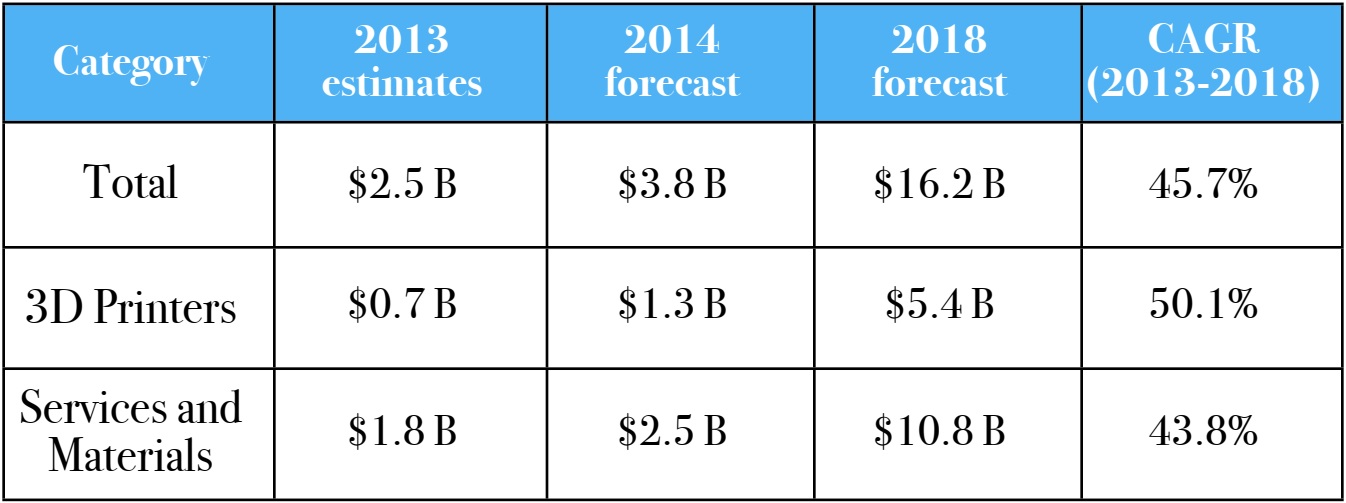
Source: Canalys
In late 2013, BAE Systems, the London-based defense and aerospace company, announced the successful flight testing of a 3D-printed stainless steel bracket on a Tornado fighter jet.
The personal 3D printing market will also present huge opportunities. For example, Mink, a 3D printer for makeup, lets users choose any color on the web or in the real world, and print that color into a blush, eye shadow, lip gloss or any other type of makeup.
With 3D printing, customization becomes the norm, and product innovation becomes much faster due to lower prototype cost.
New products that can only be created on 3D printers will combine new materials, nano scale and printed electronics to exhibit features that seem magical compared to today’s manufactured products.
3. Big Data will transition from hype to actionable insights
IDC predicted that the market for Big Data will reach $16.1 billion in 2014, growing 6 times faster than the overall IT market. Included in this figure is infrastructure (servers, storage, etc., the largest and fastest growing segment at 45% of the market), services (29%) and software (24%).

In 2013, enterprises learned a lot about how to use the Big Data infrastructure that was new to the market. This year, those lessons will be applied toward analytic applications. In 2014, we will see some great examples happen on that Big Data infrastructure. This will be the year of asking, “What can I do with Big Data?” rather than “What is Big Data?” New business models emerge, as every company now has the potential to gather data from its operations, and to make the data and analyses available to customers for a fee. According to Linc, a company that offers solutions for data-driven personalization for post-sales retail customer engagement, “Big Data created an opportunity to bring the best agent to the browser with fully contextual and personalized communication between customers and retailers”.
As Big Data technologies get more powerful, there is growing concern about what analysts call the ‘mosaic effect’, whereby a person’s identity can be derived or inferred from data sets that don’t include personal identifiers. In the current review of Big Data and privacy conducted by the U.S. Commerce Department’s National Telecommunications and Information Administration (NTIA), many submissions are doubting if the White House’s Consumer Privacy Bill of Rights can support the innovations of Big Data, while still responding to potential risks.
4. Social media stratosphere IS now ruled by pictures and videos
eMarketer forecasted consistent, albeit slowing growth in social media usage worldwide over the next 5 years. Most of the growth will come from Asia.
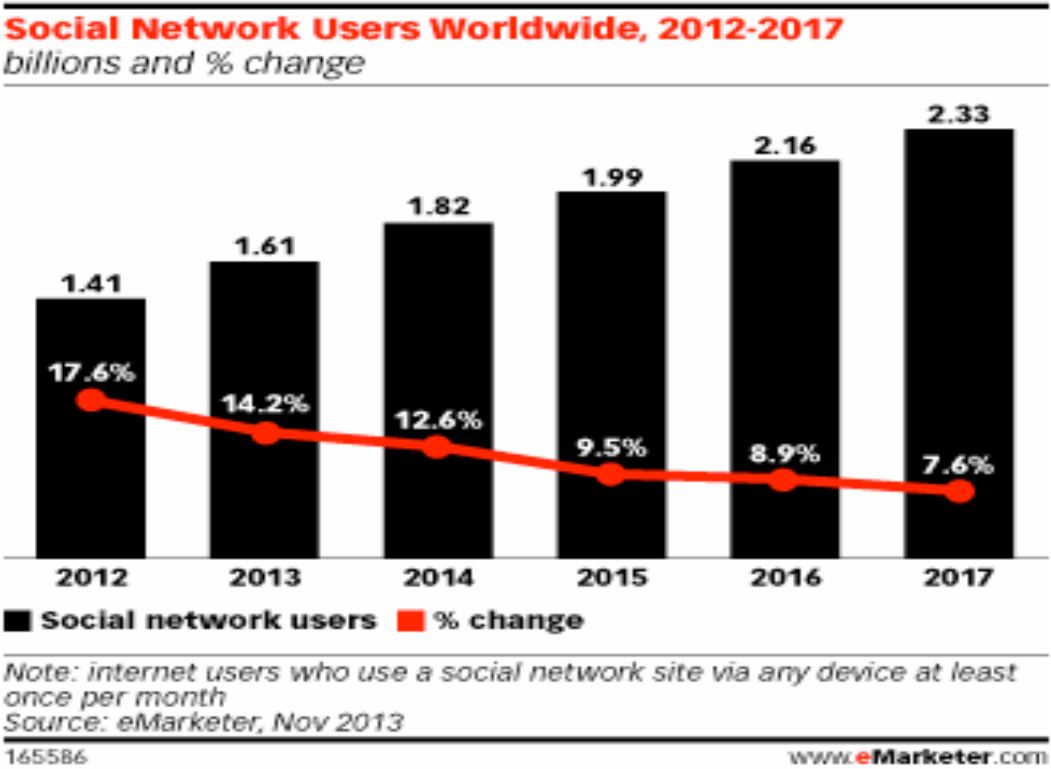
Much of the social media experiences now happen on a mobile phone.
With the launch of Vine and with Instagram’s video capabilities in 2013, micro-videos are the next hot thing in social media, as short, shared, online video is so popular amongst younger generations, many brands are embracing it as a powerful marketing tool.
Photo and video messaging app Snapchat has enjoyed a fast rise to prominence in the social media market, with Facebook reportedly offering $3 billion to acquire it in late 2013. According to the Pew Institute, 9% of mobile owners reportedly use Snapchat.
5. Augmented reality is becoming the next marketing hype
The market for Augmented Reality (AR) mobile apps will reach $5.2 billion by 2017, up from $82 million in 2012, according to Juniper Research.
Research and Markets forecast the global AR market to grow at a CAGR of 132.2% over the period 2013-2018.
AR opens up great opportunities for user engagement. Ikea’s 2014 AR catalog app is the most notable retail experiment with AR but it’s also just the beginning.
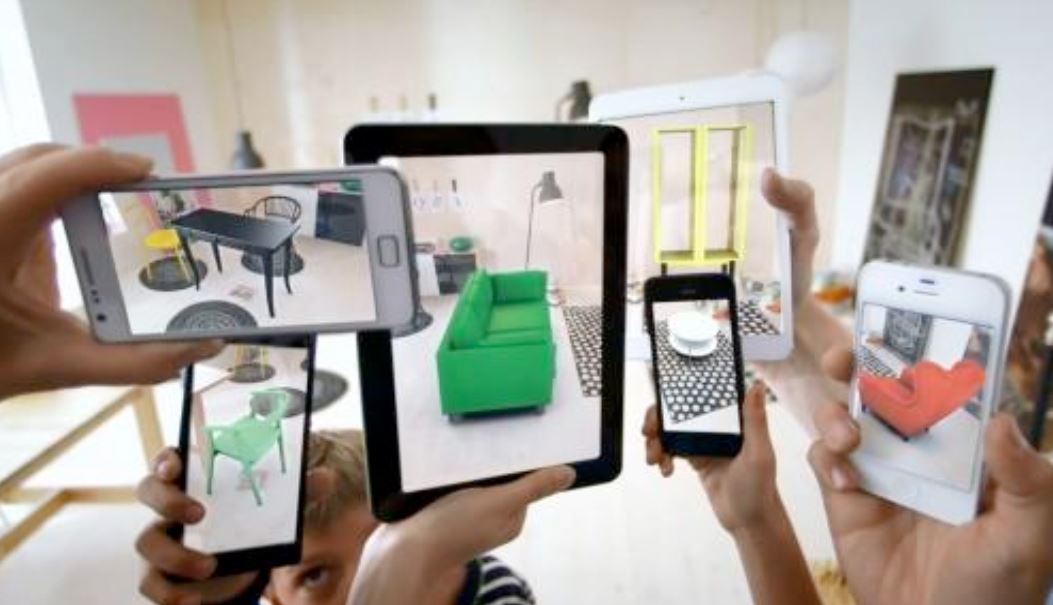
From in-store signage to geo-fenced couponing, 2014 will be the year that retailers start to explore the true power of AR in building customer engagement. (Such as Li & Fung’s Catlook, below.)

Immersive AR is increasingly applied to enhance live experiences, from AR gaming to interactive AR t-shirts.
6. Bitcoin may soon go mainstream
Bitcoin has become a $500 million market during the first seven months of 2014, continuing a growth phase that early investors sparked in early 2013, according to PaymentsSource.
Bitcoin is now accepted by an increasing number of reputable entities. In July 2014, Las Vegas Strip’s first bitcoin ATM became operational, Wikipedia began taking donations in bitcoins, and Dell began to let users order computers online and pay in bitcoins. Larger leaders in this currency like Overstock.com are paving the way for broader purchasing outlets to use services like Bitpay and Coinbase. In fact, Apple now allows bitcoin apps back in the Apple store.

On August 16, BBC News highlighted the use of Bitcoin on a local level, in markets where bank transaction charges and problems with phone lines have created an almost-cash only environment— till now.
New bitcoins are being produced (mined) at a constant speed (10m/25btc), but will halve to 12.5 in 2 years. The price went down from peak in December 2013, and the number of transactions is in bounded fluctuation.
Two main obstacles for further mainstream Bitcoin acceptance, according to Union Square Ventures founder Fred Wilson, is that demand remains largely speculative, and that the security systems are still underdeveloped. But that hasn’t stopped entrepreneurs like Cameron and Tyler Winklevoss from claiming big stakes in its future.
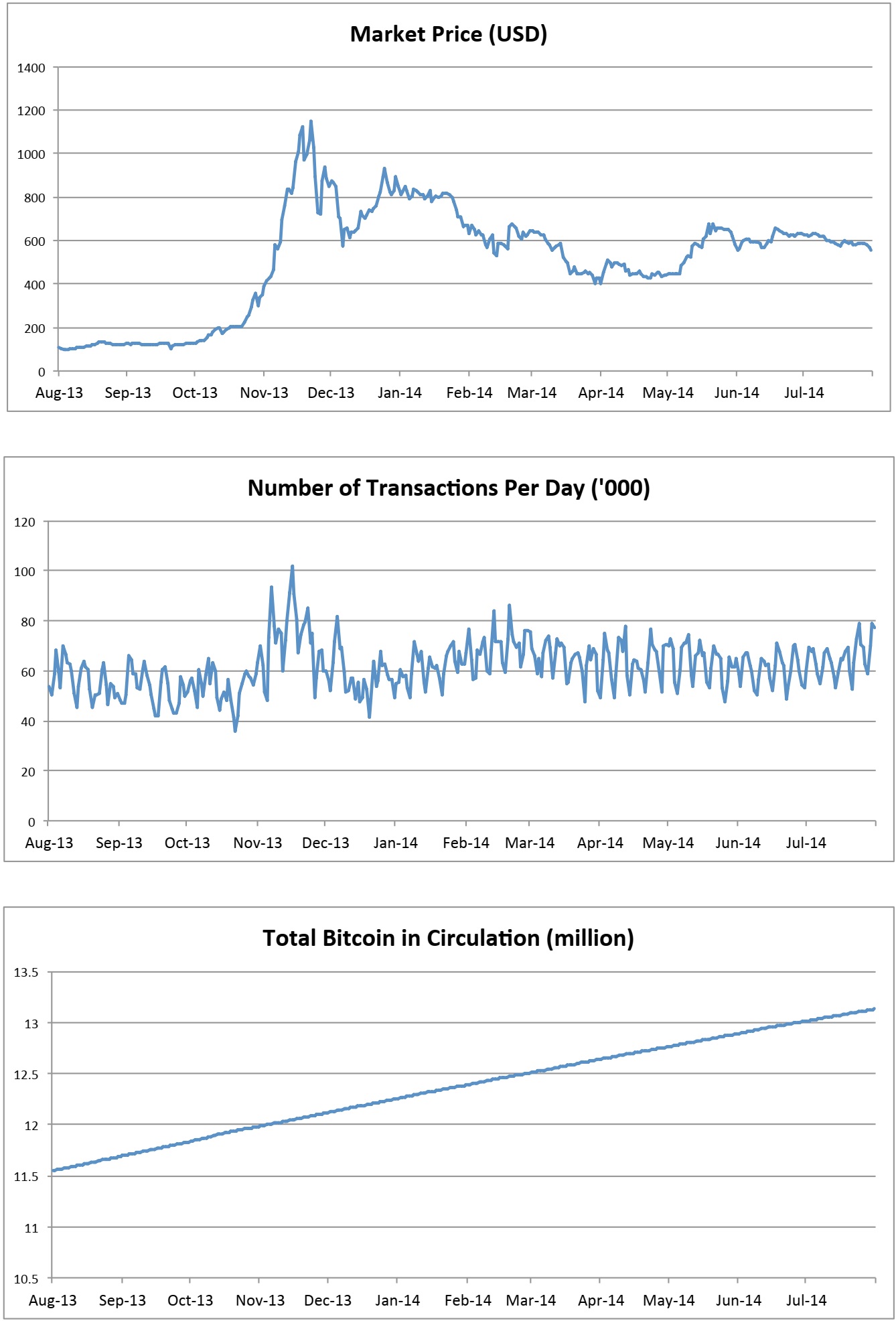
Source: blockchain.into
7. Location-based services ARE key to omni-channel retailing
91% of adult mobile phone owners in the U.S. have their devices within arm’s reach 24/7. Location-based services could exploit this massively.
According to the Pew Institute, “74% of adult smartphone owners ages 18 and older say they use their phone to get directions or other information based on their current location.”
Apps are increasingly smart, context-aware, and location-sensitive. At the same time, mobile payment, such as Google Wallet and Alipay Wallet, are being perfected, which will enable people to pay right from their smartphone.
New technology such as beacons can flag what is around a consumer based on triggers from nearby transmitters. The beacon installed base will consist of 4.5 million active beacons overall by year-end 2018, with 3.5 million of these in use by retailers, according to BI Intelligence. Half of the top 100 retailers in the U.S. are testing beacons this year, and BI Intelligence expects them to have this new technology installed in one-third of their store locations by the end of 2015.
8. Brick -and- mortar retailers are investing heavily in technology
Kroger has implemented the QueVision system to ensure that customers never have more than one person ahead of them. The system combines infrared sensors over store doors and cash registers, predictive analytics, and real-time data feeds from point- of-sale systems to cut the average wait time from more than four minutes to less than 30 seconds, according to the company.
In April, Meijer began testing at its Jenison store the “Next Generation Checkout” system, which speeds up the checkout process by scanning merchandise automatically.
In April, Tesco began trialing Apple’s iBeacon technology in its Chelmsford store to deliver location-sensitive notifications and offers to shoppers opportunities via their smartphone.
9. Accelerators and incubators are creating new tech communities in South America
Tech accelerators have played a pivotal role in rapidly globalizing the startup community by removing the barriers to entry and providing access to capital for young companies that do not have the benefit of being headquartered in Silicon Valley.
In 2011 and 2012, 388 international startups (from 49 different countries) were funded by 80 international accelerators or incubators (representing 36 countries), according to CrunchBase.
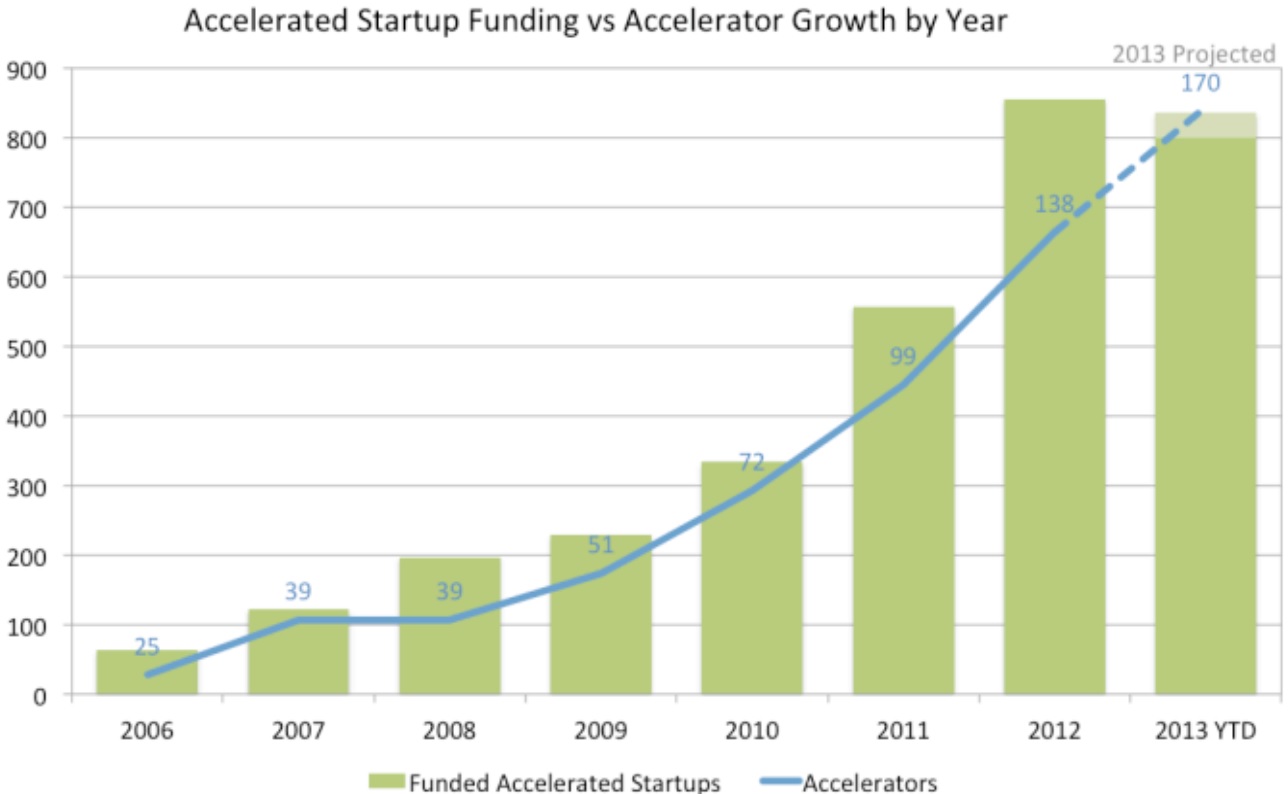
source: CrunchBase
That is twice the international presence of accelerators as in 2009, and nearly three times the diversity of companies.
The average successful startup raises $41 million, and exits at $242.9 million, according to CrunchBase.
As the startup accelerator trend has slowed down in North America in 2014, new tech communities are sprouting up in South America to serve the 200M+ population that is increasingly reliant on Internet and mobile technology.
10. Mobile devices are creating a society of networked individuals
57% of the U.S. population owns a smartphone, according to the Pew Institute, and Americans are spending an average of two hours per day on their mobile devices.
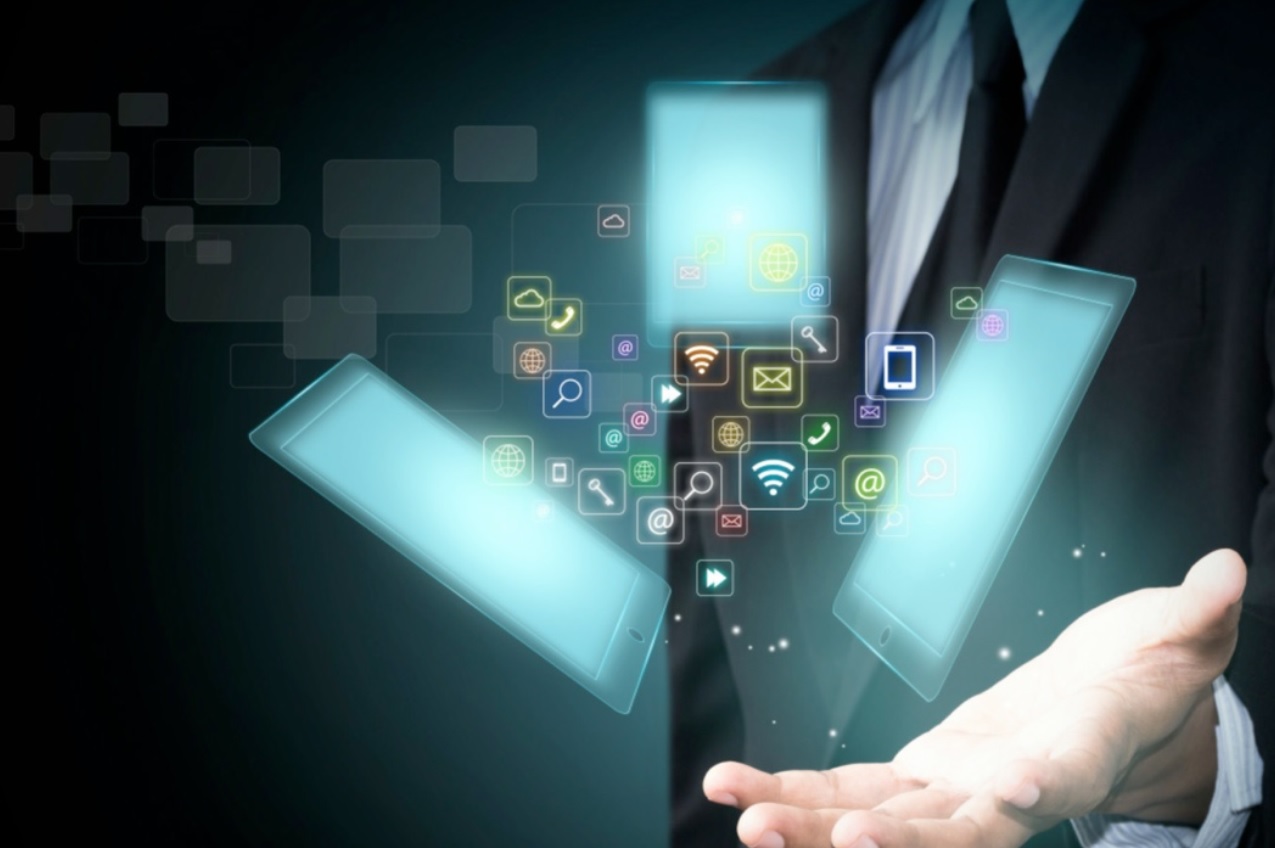
Mobile phones and tablets are the first wearables. At the same time as they bring information from the Internet to users, they also digitize the users and bring that information back to the Internet.
In incorporating the Internet and mobile phones into their lives, people have changed the ways they interact with each other. They have become increasingly networked as individuals, rather than embedded in groups. In the world of networked individuals, it is the person who is the focus—more than the family, the work unit, the neighborhood, and the social group.
Mobile devices enable users to transform public space around them into private space.
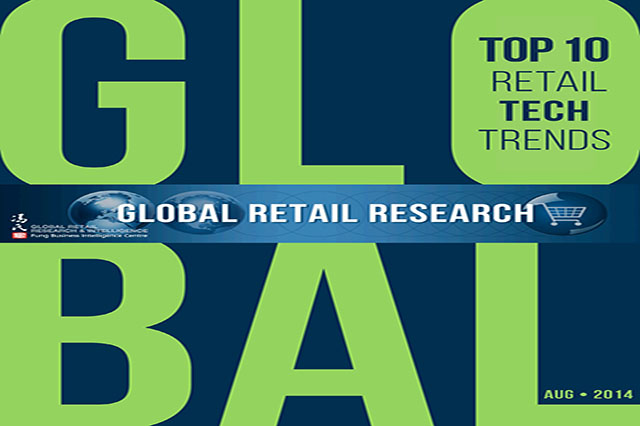
 The Industrial IoT (General Electric famously called it the Industrial Internet) combines Big-Data analysis and industrial engineering to bring huge improvement to the efficiency of machineries and factories. For example, with a multitude of sensors installed on a jet engine, GE can predict, among other things, when a crucial engine part requires repairs.
Wearable devices, which shorten the distance between human users and the Internet, are now at the heart of just about every discussion related to the Internet of Things (IoT). In the last couple of years, activity-tracking fitness bands have become so popular that they have almost become clothing accessories. The expected release of Google Glass later this year will bring wearable devices to a whole new level.
There are already clear signs that the biggest tech companies — and even smaller players — are trying to get out in front of the race to dominate the IoT. Google has acquired Nest. Apple has unveiled its HomeKit platform. Even Staples and Honeywell — not companies typically thought of as tech leaders — are putting out new IoT-related products.
The Open Interconnect Consortium (OIC) was just launched as an organization that will set standards for connected gadgets and appliances in the home.
IoT enables new ways to tackle issues such as personal safety and sustainability (e.g. smart waste management systems and electricity grids at home).
The Industrial IoT (General Electric famously called it the Industrial Internet) combines Big-Data analysis and industrial engineering to bring huge improvement to the efficiency of machineries and factories. For example, with a multitude of sensors installed on a jet engine, GE can predict, among other things, when a crucial engine part requires repairs.
Wearable devices, which shorten the distance between human users and the Internet, are now at the heart of just about every discussion related to the Internet of Things (IoT). In the last couple of years, activity-tracking fitness bands have become so popular that they have almost become clothing accessories. The expected release of Google Glass later this year will bring wearable devices to a whole new level.
There are already clear signs that the biggest tech companies — and even smaller players — are trying to get out in front of the race to dominate the IoT. Google has acquired Nest. Apple has unveiled its HomeKit platform. Even Staples and Honeywell — not companies typically thought of as tech leaders — are putting out new IoT-related products.
The Open Interconnect Consortium (OIC) was just launched as an organization that will set standards for connected gadgets and appliances in the home.
IoT enables new ways to tackle issues such as personal safety and sustainability (e.g. smart waste management systems and electricity grids at home).


 In 2013, enterprises learned a lot about how to use the Big Data infrastructure that was new to the market. This year, those lessons will be applied toward analytic applications. In 2014, we will see some great examples happen on that Big Data infrastructure. This will be the year of asking, “What can I do with Big Data?” rather than “What is Big Data?” New business models emerge, as every company now has the potential to gather data from its operations, and to make the data and analyses available to customers for a fee. According to Linc, a company that offers solutions for data-driven personalization for post-sales retail customer engagement, “Big Data created an opportunity to bring the best agent to the browser with fully contextual and personalized communication between customers and retailers”.
As Big Data technologies get more powerful, there is growing concern about what analysts call the ‘mosaic effect’, whereby a person’s identity can be derived or inferred from data sets that don’t include personal identifiers. In the current review of Big Data and privacy conducted by the U.S. Commerce Department’s National Telecommunications and Information Administration (NTIA), many submissions are doubting if the White House’s Consumer Privacy Bill of Rights can support the innovations of Big Data, while still responding to potential risks.
In 2013, enterprises learned a lot about how to use the Big Data infrastructure that was new to the market. This year, those lessons will be applied toward analytic applications. In 2014, we will see some great examples happen on that Big Data infrastructure. This will be the year of asking, “What can I do with Big Data?” rather than “What is Big Data?” New business models emerge, as every company now has the potential to gather data from its operations, and to make the data and analyses available to customers for a fee. According to Linc, a company that offers solutions for data-driven personalization for post-sales retail customer engagement, “Big Data created an opportunity to bring the best agent to the browser with fully contextual and personalized communication between customers and retailers”.
As Big Data technologies get more powerful, there is growing concern about what analysts call the ‘mosaic effect’, whereby a person’s identity can be derived or inferred from data sets that don’t include personal identifiers. In the current review of Big Data and privacy conducted by the U.S. Commerce Department’s National Telecommunications and Information Administration (NTIA), many submissions are doubting if the White House’s Consumer Privacy Bill of Rights can support the innovations of Big Data, while still responding to potential risks.
 Much of the social media experiences now happen on a mobile phone.
With the launch of Vine and with Instagram’s video capabilities in 2013, micro-videos are the next hot thing in social media, as short, shared, online video is so popular amongst younger generations, many brands are embracing it as a powerful marketing tool.
Photo and video messaging app Snapchat has enjoyed a fast rise to prominence in the social media market, with Facebook reportedly offering $3 billion to acquire it in late 2013. According to the Pew Institute, 9% of mobile owners reportedly use Snapchat.
Much of the social media experiences now happen on a mobile phone.
With the launch of Vine and with Instagram’s video capabilities in 2013, micro-videos are the next hot thing in social media, as short, shared, online video is so popular amongst younger generations, many brands are embracing it as a powerful marketing tool.
Photo and video messaging app Snapchat has enjoyed a fast rise to prominence in the social media market, with Facebook reportedly offering $3 billion to acquire it in late 2013. According to the Pew Institute, 9% of mobile owners reportedly use Snapchat.
 From in-store signage to geo-fenced couponing, 2014 will be the year that retailers start to explore the true power of AR in building customer engagement. (Such as Li & Fung’s Catlook, below.)
From in-store signage to geo-fenced couponing, 2014 will be the year that retailers start to explore the true power of AR in building customer engagement. (Such as Li & Fung’s Catlook, below.)
 Immersive AR is increasingly applied to enhance live experiences, from AR gaming to interactive AR t-shirts.
Immersive AR is increasingly applied to enhance live experiences, from AR gaming to interactive AR t-shirts.
 On August 16, BBC News highlighted the use of Bitcoin on a local level, in markets where bank transaction charges and problems with phone lines have created an almost-cash only environment— till now.
New bitcoins are being produced (mined) at a constant speed (10m/25btc), but will halve to 12.5 in 2 years. The price went down from peak in December 2013, and the number of transactions is in bounded fluctuation.
Two main obstacles for further mainstream Bitcoin acceptance, according to Union Square Ventures founder Fred Wilson, is that demand remains largely speculative, and that the security systems are still underdeveloped. But that hasn’t stopped entrepreneurs like Cameron and Tyler Winklevoss from claiming big stakes in its future.
On August 16, BBC News highlighted the use of Bitcoin on a local level, in markets where bank transaction charges and problems with phone lines have created an almost-cash only environment— till now.
New bitcoins are being produced (mined) at a constant speed (10m/25btc), but will halve to 12.5 in 2 years. The price went down from peak in December 2013, and the number of transactions is in bounded fluctuation.
Two main obstacles for further mainstream Bitcoin acceptance, according to Union Square Ventures founder Fred Wilson, is that demand remains largely speculative, and that the security systems are still underdeveloped. But that hasn’t stopped entrepreneurs like Cameron and Tyler Winklevoss from claiming big stakes in its future.


 Mobile phones and tablets are the first wearables. At the same time as they bring information from the Internet to users, they also digitize the users and bring that information back to the Internet.
In incorporating the Internet and mobile phones into their lives, people have changed the ways they interact with each other. They have become increasingly networked as individuals, rather than embedded in groups. In the world of networked individuals, it is the person who is the focus—more than the family, the work unit, the neighborhood, and the social group.
Mobile devices enable users to transform public space around them into private space.
Mobile phones and tablets are the first wearables. At the same time as they bring information from the Internet to users, they also digitize the users and bring that information back to the Internet.
In incorporating the Internet and mobile phones into their lives, people have changed the ways they interact with each other. They have become increasingly networked as individuals, rather than embedded in groups. In the world of networked individuals, it is the person who is the focus—more than the family, the work unit, the neighborhood, and the social group.
Mobile devices enable users to transform public space around them into private space.